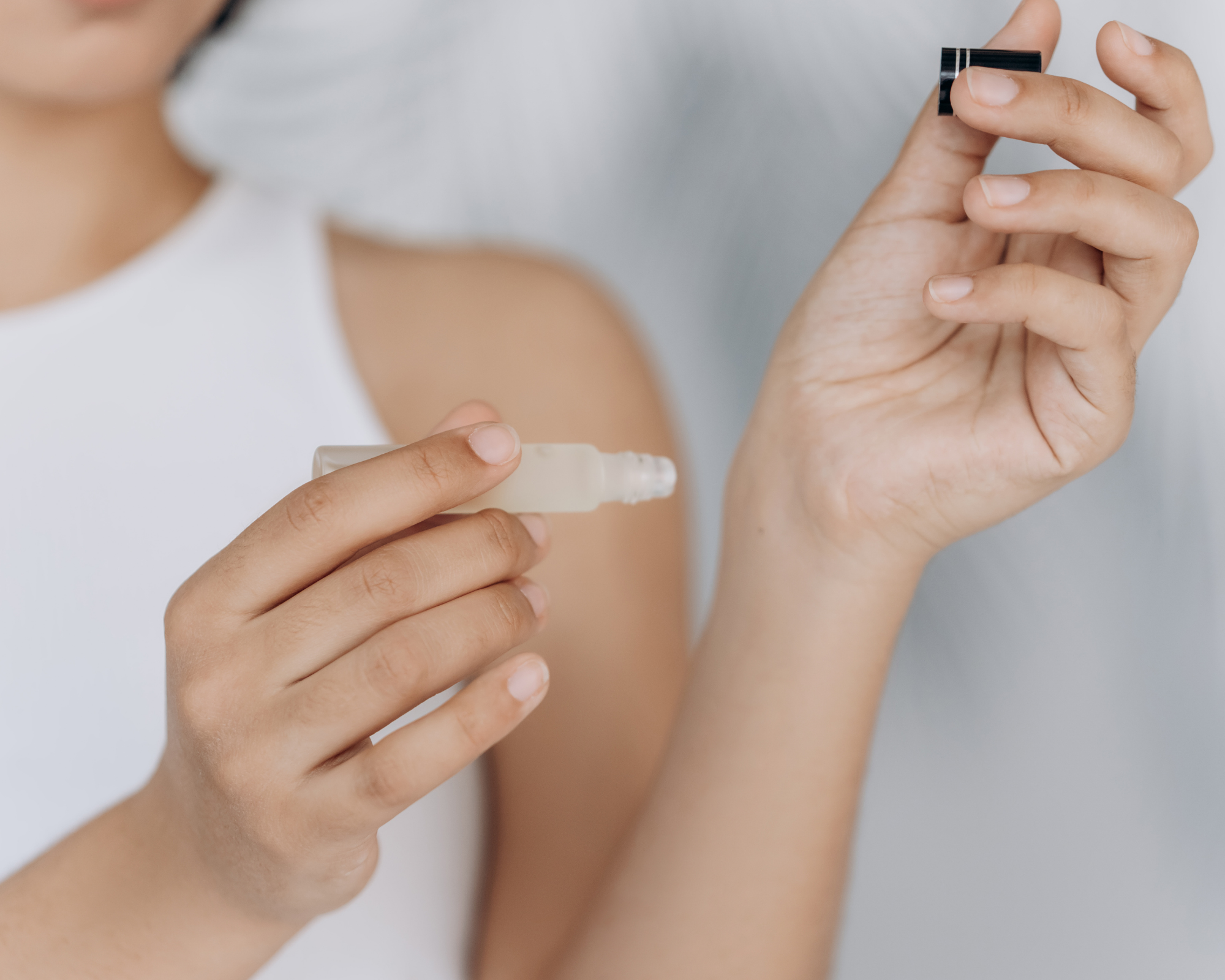Where to Apply Essential Oils for Anxiety

Here are a few effective and safe places to apply diluted essential oils when you’re looking for emotional support and nervous system balance:
Temples
A small amount of diluted oil applied to the temples can help quiet mental chatter and promote relaxation. Be mindful not to get too close to your eyes.
Wrists
Your wrists are a convenient pulse point and ideal for subtle, ongoing aromatic exposure throughout the day. Inhale the scent directly when you need a mindful pause.
Chest
Diluting and applying oils over your heart or upper chest area can help encourage deep, calming breaths and emotional grounding.
Behind the Ears
This discreet location offers another pulse point option that’s gentle and supportive, especially when you’re heading into a stressful situation.
Bottoms of the Feet
This area is often used in calming evening routines. Applying oils to the feet, especially grounding oils, can help ease the body into rest.
Application Tips
- Dilute your oils properly with a carrier oil like jojoba or fractionated coconut oil. This helps protect the skin and improves absorption.
- Apply sparingly. A little goes a long way—essential oils are very concentrated.
- Always perform a patch test before using a new oil topically, especially if you have sensitive skin.
Aromatic Use Matters Too
Topical application is one helpful method, but don’t underestimate the power of aromatic use. Inhalation can be just as effective for calming the nervous system. Personal inhalers, diffusers, or even a drop on a tissue can offer support throughout the day.
Final Thoughts
When you’re looking for natural ways to manage anxiety, essential oils offer gentle, supportive options that you can tailor to your needs. Knowing where to apply them helps you create a routine that feels both grounding and empowering.
Looking for a custom blend or more personalized guidance?
Book a complimentary 15-minute consultation to explore the oils and application methods that work best for your unique needs.
Essential Oil Use Reminder
The information provided in this article is for educational and informational purposes only and is not intended to diagnose, treat, cure, or prevent any medical condition. Essential oils are no substitute for professional medical advice, diagnosis, or treatment.
Always consult with a qualified healthcare provider before using essential oils, especially if you are pregnant, nursing, have a medical condition, or are taking medications. Use essential oils as directed and perform a patch test to check for potential allergic reactions.
